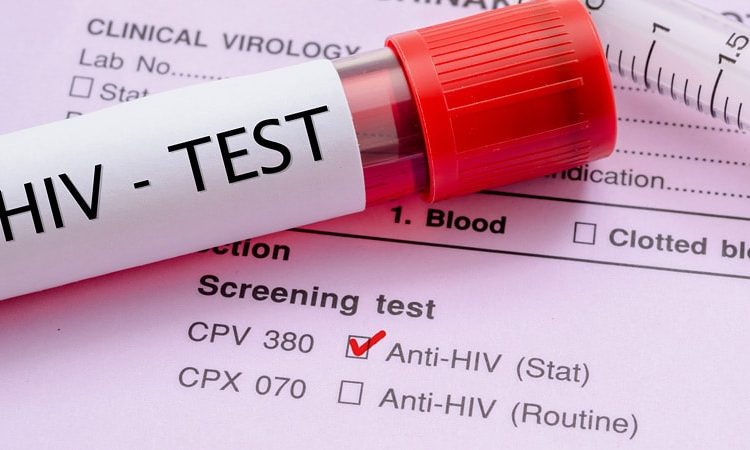European public health authorities have met a formidable opponent in the race to end the AIDS epidemic by 2030: late HIV.
At last count, slightly more than half of diagnoses in European Union (EU)/European Economic Area (EEA) countries were associated with a CD4 cell count <350 cells/mm3, 35% of which were considered advanced (ie, presenting for care with an AIDS-defining illness or indicator condition regardless of CD4 cell count). Both factors meet the late HIV — or “late presenting” — definition endorsed by the European Centre for Disease Prevention and Control (ECDC) and World Health Organization (WHO) in 2009.
However, it appears that many cases were captured during seroconversion (when CD4 counts declined to levels below 350/mm3 temporarily), hampering public health authorities’ efforts to understand and accurately track if key benchmarks, such as testing, treatment, and care linkage, are being met regionally, locally, and nationally across EU/EEA countries and the United Kingdom.

Annemarie Rinder Stengaard
“We felt that there was a need to harmonize the approach across European countries,” Annemarie Rinder Stengaard, MSc, a public health research project coordinator at the Centre of Excellence for Health, Immunity and Infections (CHIP) at the University of Copenhagen in Denmark and member of the EuroTEST HIV Late Diagnosis Definition Working Group, told Medscape Medical News.
The Working Group of European HIV experts met this past spring to revise the current late HIV diagnosis, and through outreach efforts to 53 national HIV surveillance contact points in the WHO European Region, gain a better understanding of the diagnostic data needed to possibly reclassify current late HIV diagnoses.
The effort resulted in a revised consensus definition of late HIV, according to the published Working Group Communication in a special supplement published this month in HIV Medicine. The new definition changed existing verbiage from “late presentation to late diagnosis” to account for cases requiring reclassification. The Working Group also determined that evidence of recent infection should be considered hierarchically and reclassified as “not late” based on 1) laboratory evidence of recent infections; 2) last negative HIV test ≤12 months of diagnosis; 3) clinical evidence of acute infection.

Anastasia Pharris
“Part of our definition is just sorting out the public health indicator to correctly classify cases,” said co-author Anastasia Pharris, RN, MPH, an ECDC HIV Expert, and EuroTEST Working Group member. Pharris also noted that the previous definition would exclude people with evidence of having been previously diagnosed in another country prior to moving to their current country of residence.
“We think that the updates have now captured reality in a way that allows us to monitor [the situation] over time,” she said.
Although intended primarily for public health surveillance, a redefined late diagnosis definition might also be useful at the clinical level, especially for clinicians who are less familiar with late HIV.

Dr Lina Rosengren-Hovee
“You just can’t look at CD4 count in isolation for a variety of reasons,” Lina Rosengren-Hovee, MD, MPH, an infectious disease physician and epidemiologist at the University of North Carolina-Chapel Hill, told Medscape Medical News. Although not involved in the EuroTEST Group efforts, Rosengren-Hovee reinforced that the definition changes are important.
“Everyone’s baseline CD4 count is different; there’s a range of ‘normal’ ” she explained. “I try to counsel [and] encourage other doctors to not check CD4 counts because it is not reflective of that patient’s immune system or acute illness, and it really doesn’t tell you anything about how they are doing in terms of their HIV.”
Late HIV Also Challenging in the US
In 2014, the US Centers for Disease Control and Infection (CDC) took steps to facilitate early diagnosis of HIV to allow for monitoring early cases (when the virus is most likely to be transmitted) separately from advanced cases, a CDC spokesperson explained to Medscape Medical News in an email.
These efforts entailed recommendations to laboratories that they capitalize on fourth-generation HIV tests to detect the p24 antigen (which appears in the blood earlier than antibodies), differentiation assays that distinguish HIV-1 from HIV-2, and nucleic acid tests (NAT) that identify false positives and facilitate early detection.
At the same time, the CDC also published a revised case definition that classified HIV infections on a continuum from stage 0 (an acute infection identified by a negative HIV test ≤6 months of diagnosis) to stage 3 (AIDS), thereby eliminating a need to differentiate between presumptive and definitive opportunistic infections. Cases could also be classified as “unknown” if they did not fit stages 0-3.
“These efforts have allowed acute HIV cases to be classified and monitored separately from advanced HIV cases,” said the CDC spokesperson. Nevertheless, like its European counterparts, late diagnosis has remained a challenge in the US. According to 2020 surveillance data, 7% (1953 of 28,422) of HIV diagnoses were stage 0, whereas 21% (6105 of 28,422) were stage III.
Various Testing Strategies Might Prove to be Key
Late HIV diagnosis is associated with increased morbidity and early death, and the risk for onward transmission has raised questions about the type of strategies needed to avert these cases.
One consideration might be what Inês Vaz-Pinto, MD, an HIV-AIDS Functional Unit specialist at the Hospital de Cacais in Lisbon, Portugal referred to as “opportunistic screening.” Vaz-Pinto is co-author of a study published in the HIV Medicine December supplement that looked at the impact of opportunistic screening in the emergency department (ED) on late diagnosis.
“We decided to call our project an opportunistic screening strategy because we [took] advantage of two things that were already occurring: 1) the patient is already in the hospital, namely in the ED, and 2) the patient is having blood taken for whatever reason made him come into the ED in the first place,” she explained by email.
Between September 2018 and September 2021, Vaz-Pinto and colleagues implemented the automated HIV screening program in patients presenting to the ED with a preexisting physician order for a blood test; an electronic health record automatically generated patients eligible for screening, who at the time of the blood draw were offered an HIV test or the ability to opt out.
Of the 43,153 patients visiting the ED, 88.9% (38,357) were identified as eligible and ultimately received HIV testing; most were aged 40-64 years, and two thirds were of Portuguese origin.
Vaz-Pinto said that compared with a historical cohort of patients presenting in the prior screening period (2015-2018), late HIV presentation in the ED setting was reduced from 78.4% to 39.1%. Additionally, the researchers also observed a 20.5% decline in patients representing previously missed opportunities for HIV diagnosis.
“By using an automated screening program, we eliminated the human factor from the whole equation of screening,” she said, which “we know represents one of the major barriers for HIV testing.”
The automated process does not rely on patient or clinician initiative to drive HIV testing, nor does it place an extra burden on ED staff, she added. Most importantly, however, “opt-out strategies help to normalize HIV testing.”
This past April, the UK National Health Service (NHS) implemented a routine opt-out HIV program within 33 hospital EDs, whereby people are offered discreet testing for HIV, and hepatitis B and C in order to reach people who may not otherwise encounter blood-borne virus testing opportunities.
“They picked up over 800 cases in 100 days, which is a lot for the UK,” said the University of Denmark’s Stengaard, “and they picked up over 100 people who had been lost to care.”
This is where you can find those intersections between settings where HIV testing would not be automatically considered and people who didn’t believe that they were at risk, she further explained.

Simon Collins
Simon Collins, an HIV advocate, co-founder of the UK-based treatment activist group HIV i-Base, and co-author of an editorial accompanying the December HIV Medicine supplement, also pointed out that people who are in the most difficult [situations] are those who have gone for years without testing, often because they’ve declined them when they’ve been offered.
However, “much more common is that they’ve been having health problems, they’ve gone to doctors, particularly primary care doctors, even with indicator illnesses, and they’ve not been giving HIV tests,” he told Medscape Medical News.
Can Early Self-Testing Help?
“When it comes to HIV testing, it has to be a multi-pronged approach; the more modalities that we have, the more people we are going to reach, right?” said Rosengren-Hovee.
Toward that end, the CDC recently awarded $8.3 million to an Emory University-led collaborative program — Together TakeMeHome — which builds upon a pilot project launched in March 2020.

Dr Patrick Sullivan
“We have a much better understanding of the benefits of early intervention with treatments on long-term outcomes — the closer to the time of HIV infection that we’ve identified someone, the better,” said Patrick Sullivan, PhD, DVM, professor of epidemiology at Emory University in Atlanta, Georgia, and a primary investigator of the Together TakeMeHome Initiative.
“I think that the CDC is doing the right thing in terms of programmatically trying to be innovative, to get people who would benefit from screening testing as early as possible,” he said.
This is particularly true of key targets for the program, which include Black, Hispanic, Latinx, and Southern communities, all of whom experience a higher risk of HIV.
Meanwhile, back in the UK, the 100 days opt-in study has shown what can be achieved with a bit of ingenuity.
“The UK has done a great job in that they consider late diagnosis a critical event; they have a good health system with good record keeping, so they can look back and say, ‘When did this person seek care for maybe related issues and not get offered an HIV test, [and] how can we improve?’ ” noted Pharris.
“It’s important to get the public health actors and clinicians and the community all engaged because they have different pieces of the puzzle to make it work,” she added.
The EuroTEST Initiative receives funding from Gilead Sciences, Merck MSD, ViiV Healthcare, and the European Centre for Disease Prevention and Control. Stengaard, Pharris, Collins, and Rosengren-Hovee report no relevant financial relationships.
HIV Med. Published online November 8, 2022. Full text
HIV Med. Published online November 1, 2022. Full text
HIV Med. Published online November 17, 2022. Editorial
Liz Scherer is an independent journalist specializing in infectious and emerging diseases, cannabinoid therapeutics, neurology, oncology, and women’s health.
Source: Read Full Article
